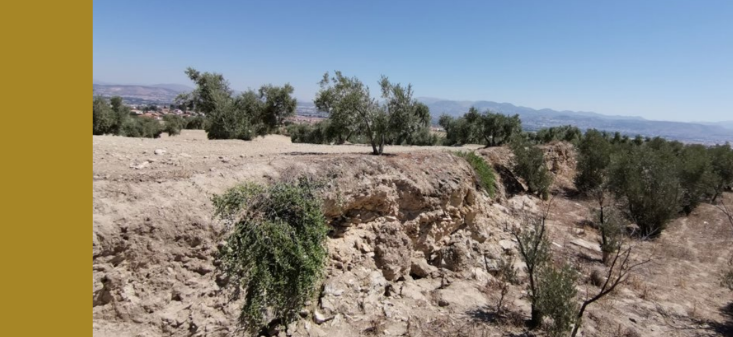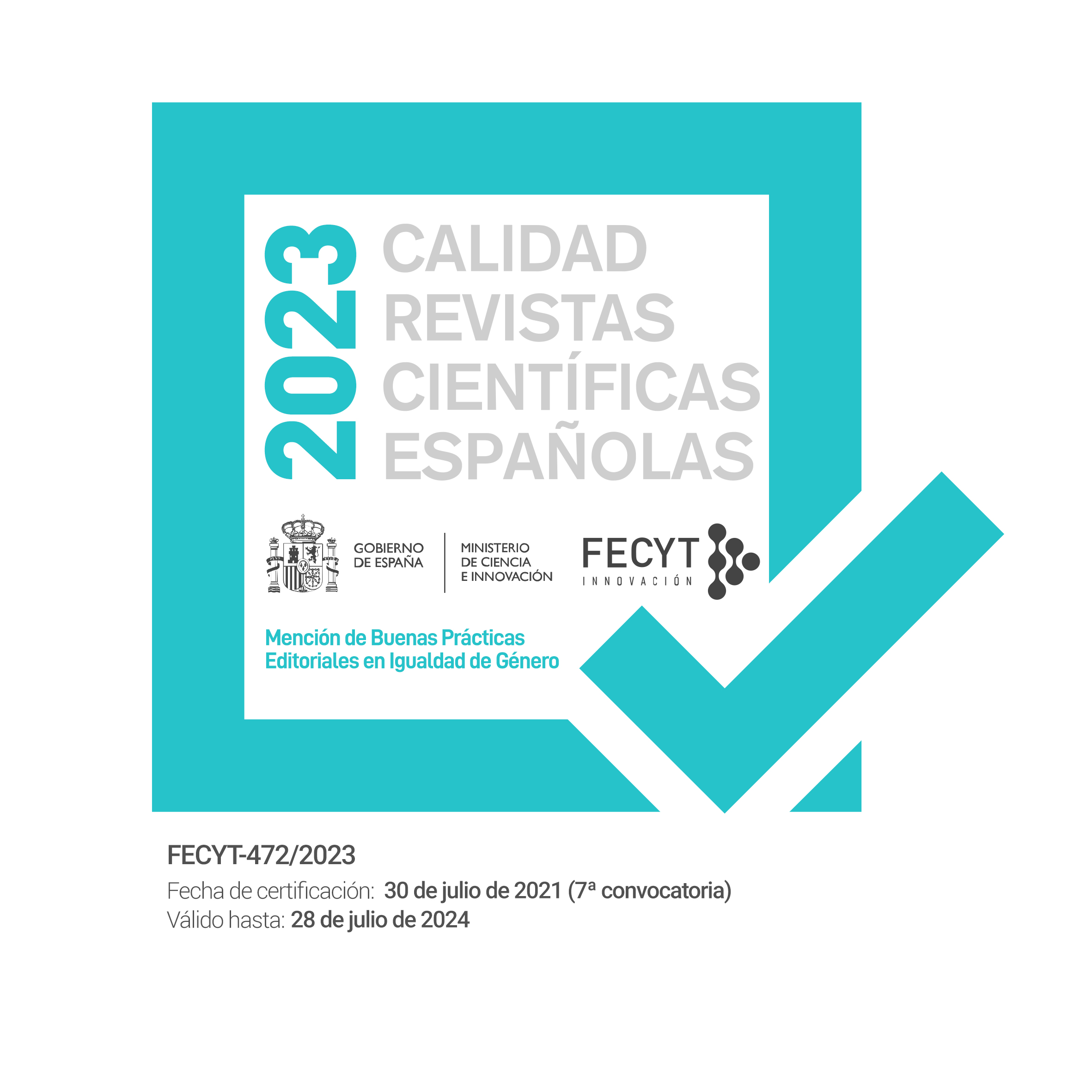The Historical Stone Quarries of Gabia la Grande (Granada, Southeast of Spain): Heritage Recovery through Ethnographic Sources
DOI:
https://doi.org/10.30827/erph.34.2024.28156Keywords:
Gabia Grande, Watchtower, Historical quarry, SandstoneAbstract
With this work, the aim is to demonstrate the historical and patrimonial relevance of the sandstone quarries in Gabia Grande (Granada), located in the Atalaya site. The outcrops of this stone in its territory are evident to the naked eye, but with greater preponderance appears in this area as can be seen in figure 1. There are notable architectural evidences of the use of this material in the different historical stages as evidenced by the material testimonies, including the site of the Roman villa of Gabia with its cryptoportic, the Muslim tower in the square of El Fuerte, the photographic testimony of the Watchtower, the palace houses of the sixteenth century and the countless buildings scattered throughout the historic quarter. To this end, it has documented its territorial scope, the techniques used for the extraction of raw materials, the means of transport used, the protagonists who participated in the last decades of its exploitation, the construction techniques that were developed with this material in the buildings and the description of the urban areas where this material currently lives. Due to its importance as a constructive material and the proximity to the urban area, this raw material could constitute a source of development, both social and economic, for this population, possibly from the Ancient Age until the middle of the twentieth century.
Downloads
References
Archivo Histórico Municipal del Excmo. Ayuntamiento de Las Gabias. Informe del Instituto Geológico y Minero del Ministerio de Industria y Energía, (sin clasificar) 1980.
BAJTIN, Mijail (1970). L’oeuvre de François Rabelais et la culture populaire au Moyen Âge et sous La Renaissance, Paris.
CONEJERO LÓPEZ, José; IZQUIERDO RODRÍGUEZ, Alejandro (2002). Lugares, Caminos y Veredas de la Vega y el Secano de Las Gabias. Excmo. Ayuntamiento Las Gabias. Granada.
DÍAZ DE LA GUARDIA Y LOPEZ, Luis; BOLÍVAR GALIANO, Elisa (2002). La Villa Granadina de Gabia La Grande y su Justicia: 1628-1759. Granada. Excmo. Ayuntamiento de Las Gabias.
ESPINAR MORENO, Manuel. (2009) Gabia la Grande: Apeos y Repartimiento. Excmo. Ayuntamiento de Las Gabias.
GINZBURG, Carlo (2009). El queso y los gusanos. El cosmos, según un molinero del siglo XVI. Traducción de Francisco Martín; traduccieon de las citas latinas al cuidado de Francisco Cuartero (1a ed. en este formato). Península.
GONZÁLEZ DONOSO, J. M., GALLEGO, J. A. y SANZ DE GALDEANO, C. (1980). Mapa Geológico de España 1:50.000. Hoja 1026: Padul. Mapas y Memoria. Instituto Geológico y Minero de España, Madrid. p.44 y 1 mapa.
Instituto Geológico y Minero de España (1980). Informe Hidrogeológico para la mejora del abastecimiento de Las Gabias. Granada. pp. 23.
IZQUIERDO RODRÍGUEZ, Manuel (1994). Las Gabias: Ayer y Hoy. Granada. Ayuntamiento de Las Gabias.
IZQUIERDO RODRÍGUEZ, Alejandro (2000). Casas señoriales de Las Gabias: Casa de los Blascos. Gaviar. Las Gabias: Octubre, pp. 32-39.
JIMÉNEZ MATA, M. Carmen (1990) La Granada Islámica. Contribución a su estudio geográfico- político- administrativo a través de la toponimia. Granada. Universidad.
MALPICA CUELLO, Antonio (2000). El Poblamiento y la Organización del Espacio. Historia del Reino de Granada. pp. 249-289. Universidad de Granada.
MALPICA CUELLO, Antonio (2002). Los Castillo en Al-Andalus y la organización del Territorio. UE. Cáceres.
MARÍN DÍAZ, Purificación; ORFILA PONS, Margarita (2016). “La Vega de Granada y sus establecimientos rurales Romanos: Nuevos datos sobre la zona residencial de la Villa de Gabia”. Revista de arqueología de la Universidad Pablo de Olavide de Sevilla. ROMVLA 15. pp. 283 - 308
MARTÍN GARCÍA, Mariano; BLEDA PORTERO, Jesús; MARTÍN CIVANTOS, J. María (1999). Inventario de Arquitectura Militar de la Provincia de Granada (siglos XIII al XVIII). Excma. Diputación de Granada.
PASCUAL MADOZ (1845-1850). Diccionario geográfico-estadístico-histórico de España y sus posesiones de Ultramar. Madrid. s.v. Gavia La Grande, p. 85.
TORRES TORRES, Encarnación (2000). Casas señoriales de Las Gabias: Casa de la Sacristía. Gaviar. Enero, pp. 32-36.
SALOBREÑA GARCIA, José (2000). Las Gabias: Operación Rescate. Excmo. Ayuntamiento de Las Gabias. Granada
Registro de la Propiedad de Santa Fe número 2, c/ Diego Liñán, 2 esq. c/ Arrecife. Santa Fe, Granada. (10/02/2022)

Downloads
Published
How to Cite
Issue
Section
License
Copyright (c) 2024 LUIS ALCOBA RODRÍGUEZ

This work is licensed under a Creative Commons Attribution-NonCommercial 4.0 International License.
Las/os autoras/es conservan los derechos de autoría y otorgan a la revista el derecho de primera publicación (reproducción, edición, distribución, comunicación pública y exhibición).
Más infomación en Sobre la revista > Aviso de derechos de autor/a














